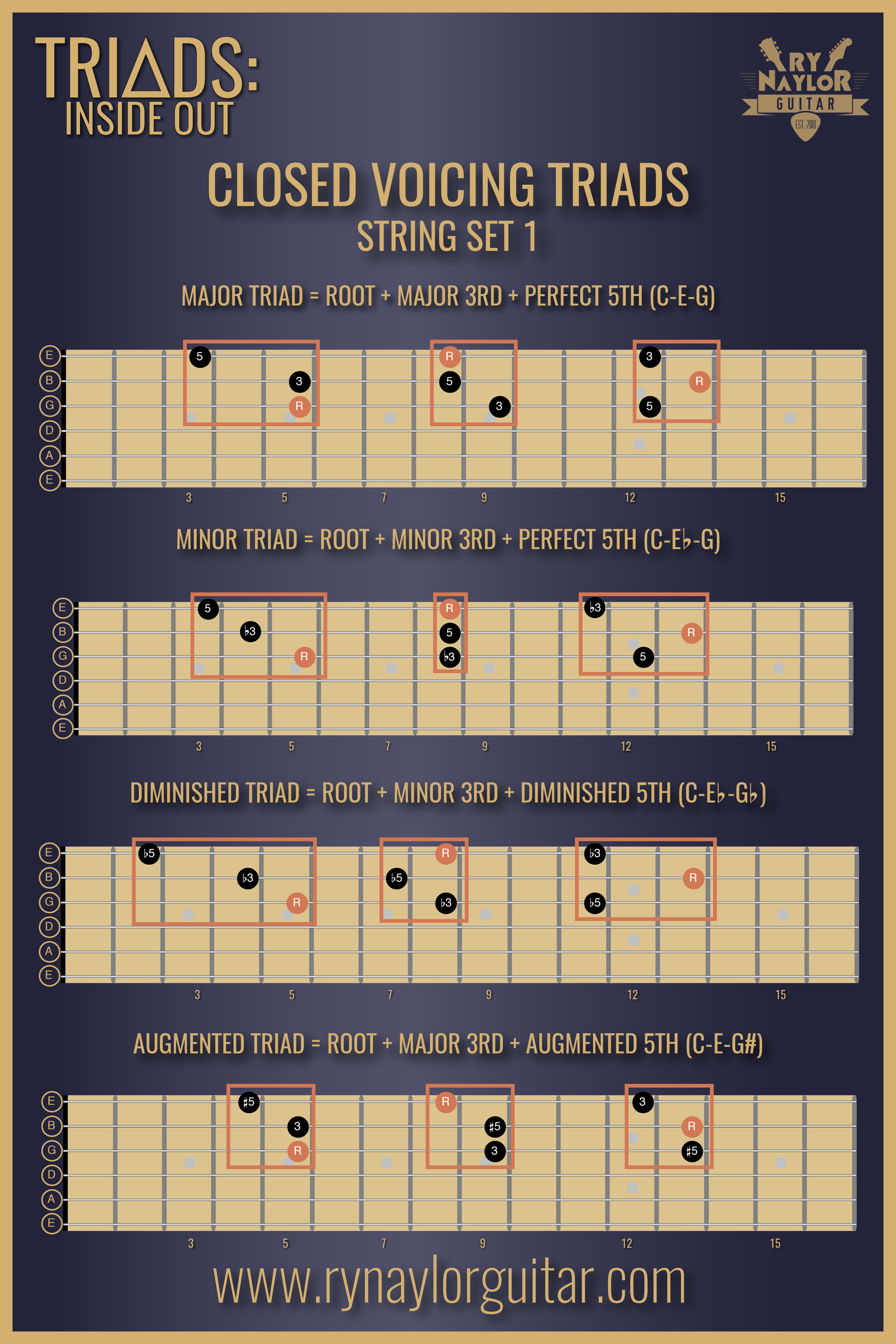Creating Awesome Guitar Chords
/It's hard to come up with chords that sound fresh and inspire our creativity but here's one guaranteed way to create chords that will sound awesome together.
Read MoreIt's hard to come up with chords that sound fresh and inspire our creativity but here's one guaranteed way to create chords that will sound awesome together.
Read MoreWhat is the best way to learn pentatonic scales on the guitar? And how can we connect pentatonic scale patterns across the fretboard? Simples…learn them up and down a single string!
Read MoreI was playing through some progressions in preparation for the next module of TRIADS: Inside Out, and this chord just came out. Had to share!
There’s also the bonus Add9 that can be played by dropping the shape down one string set and adjusting for string 2(B).


You can download all the chord shapes that I show in the breakdown here.
In module 2 of ‘TRIADS: Inside Out’ we are taking the triad inversions that were learnt in the first module and applying them to the chords in a key to be able to play through any diatonic major chord progression.
Chords scales (playing up through the diatonic chords in the scale) is a super useful exercise to learn chord shapes and how they relate to one another. You can do this with triads, barre chords, seventh chords etc. We are, of course, focusing upon triads at the moment. Rather than climbing up the neck horizontally with the chord scale (which is the most common approach, keeping the triads in the same inversion) we are playing through the chord scale within one particular area of the fretboard. I like to call these ‘segments’, so here is an example playing through the first segment in the key of G major, keeping it all between the 2nd and 5th fret of the guitar.
Module 2 goes through these chord scales in all the different segments of the fretboard and demonstrates how you can use that to quickly add a guitar part to a chord progression. You can find out more about the course and sign up by hitting the button below:
The first thing you need to learn about triads is the intervals that make up the four different types (major, minor, diminished and augmented) and how to play their different ‘inversions’ up the neck.
The graphic below summarises the content of the first module of my latest video course release ‘TRIADS: Inside Out’. You can sign up and join us inside right now if you want to find out more (which you really should. Triads are SO useful).
Closed voicings find the three notes of the triads as close as they possibly can be within one octave. With the triad containing three notes (a Root, third and fifth), there are three different combinations of these three intervals, known as the inversions.
We have (in order of pitch)
Root - Third - Fifth (a root position triad)
Third - Fifth - Root (a first inversion triad)
Fifth - Root - Third (a second inversion triad)

The examples shown are the four different triad shapes rooted in C on (what I call) string set 1 (the high E, B and G strings).
There are a couple of great exercises within the course to help you memorise the shapes so definitely check it out and I hope to see you inside!
In module one of my forthcoming video course ‘Triads: Inside Out’ we are going to learn the closed voicings of the four different triads. Here is a breakdown of the major triad and one approach to how you can visualise it on the fretboard.
Read MoreFREE EBOOK
PREMIUM GUITAR COURSES
EBOOKS